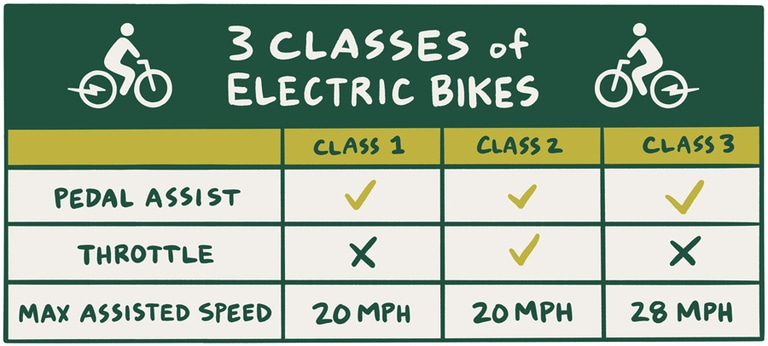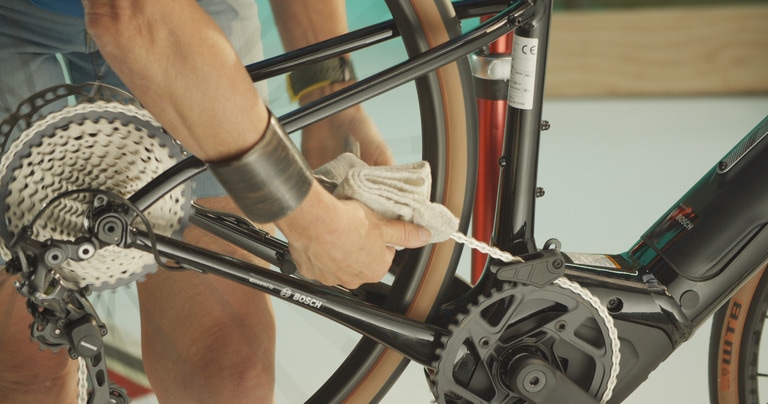Electric bikes looks a lot like the non-electric bikes you're familiar with, but they're equipped with a battery and a small electric motor to assist you in pedaling faster and farther. E-bikes are offered in a variety of styles, including cargo bikes, commuting bikes, mountain bikes, folding bikes and more.
The motors on an electric bike senses when you're pedaling and gives you a boost to propel the bike forward, making pedaling easier. Many e-bikes have several levels (or modes) of assistance that allow you to adjust the amount of boost you get. Some electric bikes provide a boost only when you pedal, others have a throttle button that will assist you even when you don't.
Video: What is an Electric Bike?
E-bikes are categorized into three main classes, which often determine where you can ride them. Most bike manufacturers and state, local and other entities have adopted this system, which defines e-bikes as a low-speed bicycle with fully operational pedals and an electric motor of less than 750 watts (about 1 horsepower).
What are the three classes of e-bikes?

- Class 1: The motor kicks in only when you're pedaling, and the assist stops helping at 20 mph.
- Class 2: These e-bikes have a pedal-assist mode up to 20 mph; they also offer a throttle-powered mode that doesn't require pedaling.
- Class 3: Like a class 1 e-bike, the motor kicks in only when you're actively pedaling, but it stops helping at 28 mph.
Do I have to pedal to engage the motor?
It depends on the class of bike you have. For class 1 and class 3 e-bikes, you must pedal to get motor assistance. Class 2 e-bikes also have a throttle that propels the bike even without pedaling.
Where can I ride an e-bike?
E-bike laws differ from state to state and even in local areas, and the class of bike you have will often determine where you can ride. Always check your local rules, or consult the adocacy group PeopleForBikes for an overview of laws and policies.
Why choose an e-bike?
The short answer? They're a lot of fun, and just one of the many options you have when choosing your two-wheel ride. You can ride farther and faster on e-bikes, carry heavier loads with less effort or even help replace a car as transportation for short trips or commutes.
Do I need a license or insurance to ride an e-bike?
Generally, no, if your electric bike falls within the three-class system we mentioned. But it's always a good idea to check your local laws or state laws. It's all our responsibility to know the law, follow speed limits, share the road, and respect other users' safety.
What types of e-bikes are available?
You'll find e-bikes designed for different types of riding, such as mountain biking, hauling cargo, commuting, road riding or recreational/urban riding.
Are e-bikes heavy?
The electrical components (battery, motor, controller) on an e-bike might add between 10-20 pounds more to the weight of an e-bike compared to its non-electric counterpart. E-bikes can range from about 40-80 pounds.
Can I ride e-bikes in the rain or bad weather?
Yes, just like any bike, you can ride your e-bike in the rain.
Do e-bikes have shifters? Most e-bikes have gear shifters just like non-electric bikes and pedaling in easier gears at higher cadences helps preserve battery life.

Can I wash my e-bike? Yes, you can wash an electric bike. As with any bike, keeping your e-bike clean can help extend its life. Use low water pressure and avoid spraying water at the battery or wire connection points. Learn more in our article How to Clean a Bike.